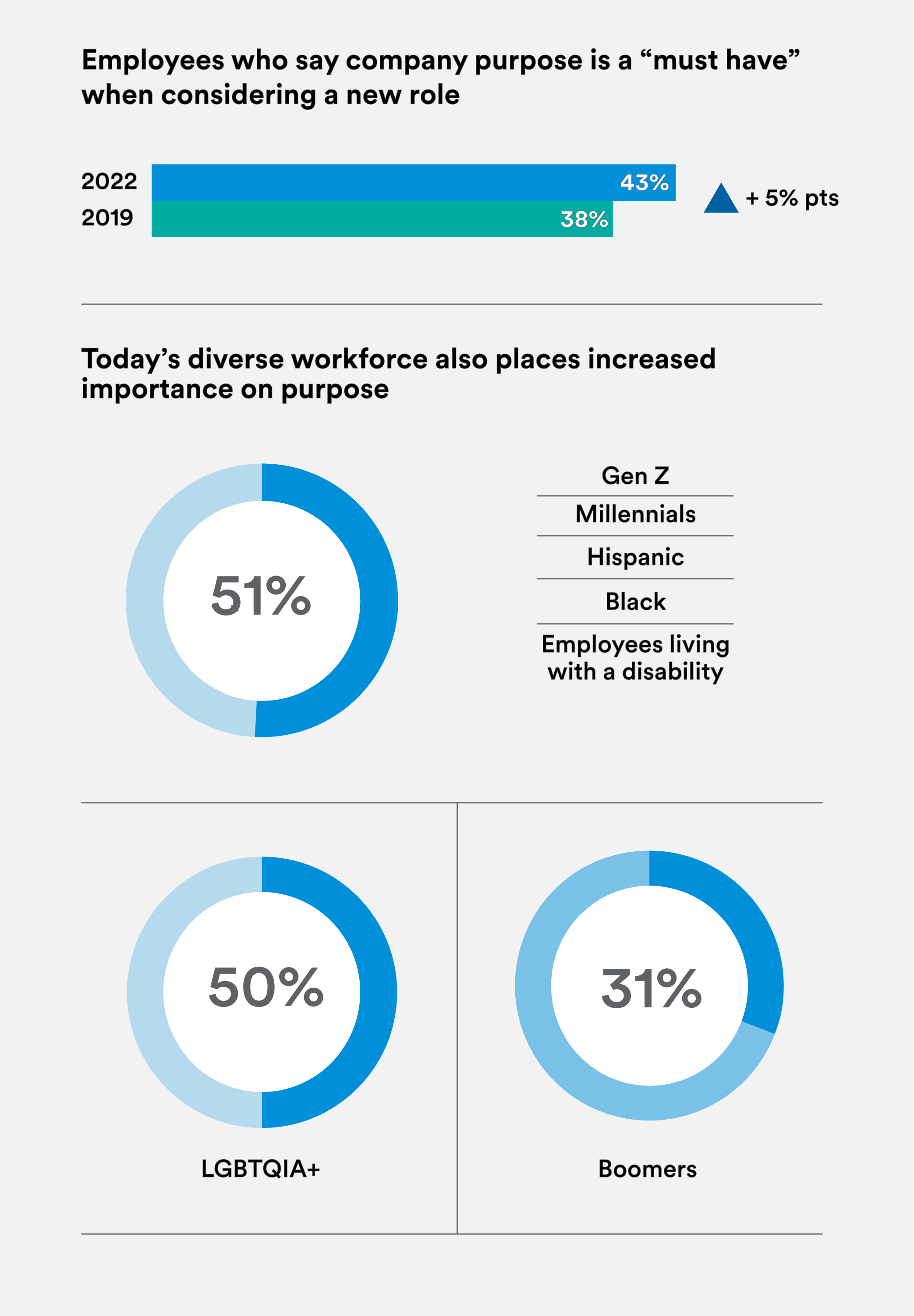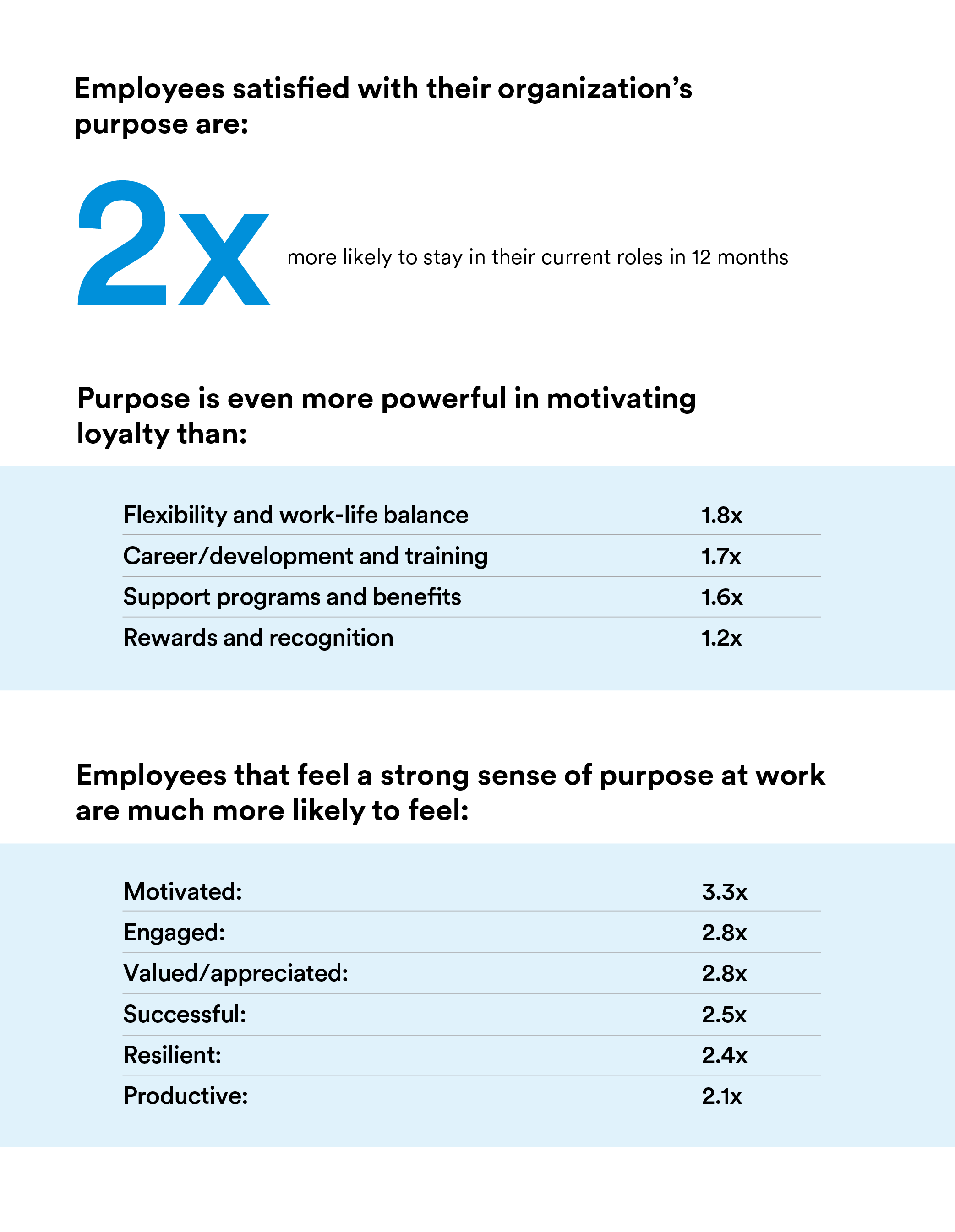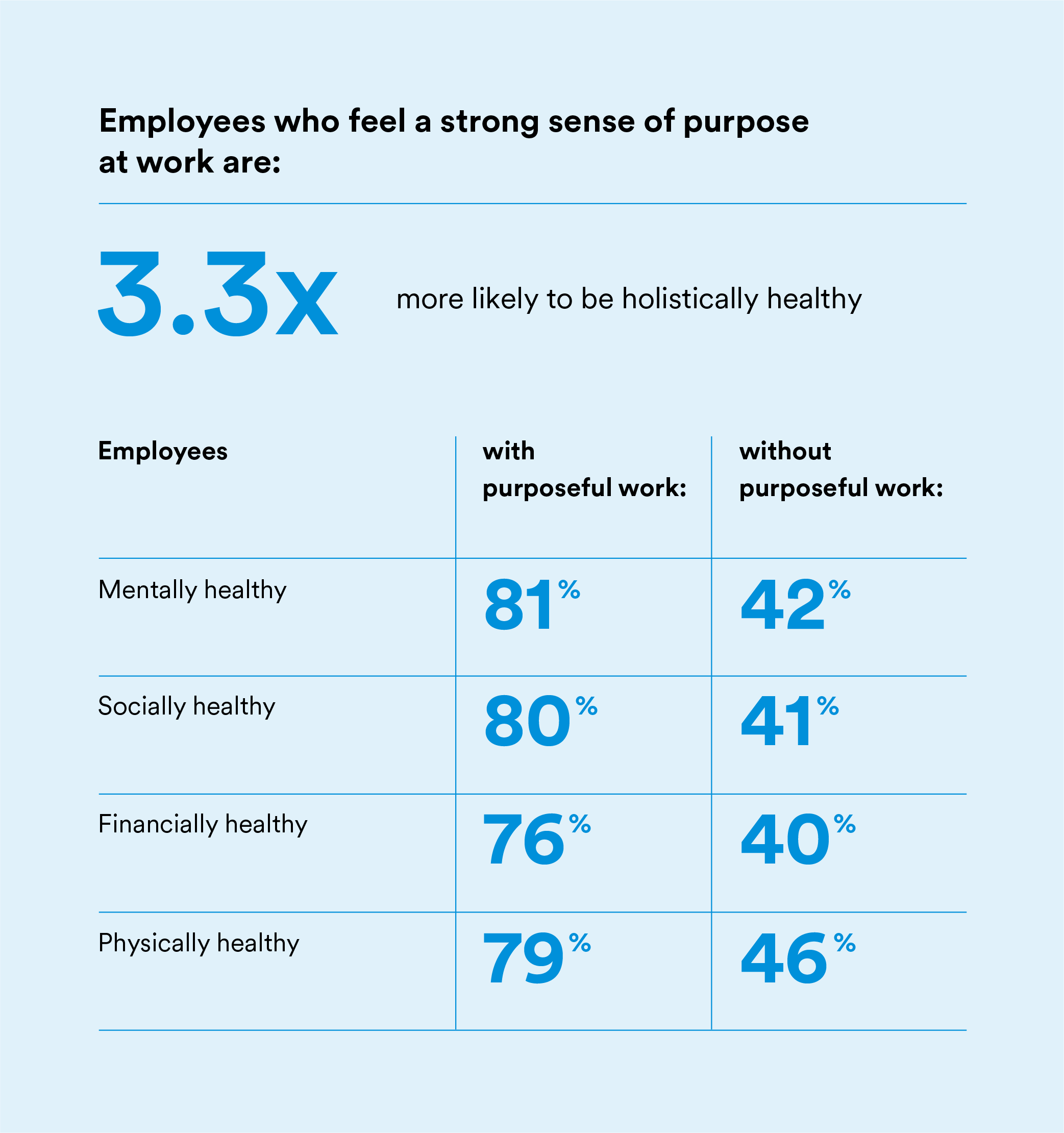Unifying and engaging the workforce through purpose
Key takeaways:
Purpose-led organizations can:
- Attract more workers, especially younger employees
- Unify a diverse workforce
- Boost holistic well-being across the workforce
- Retain workers more effectively
Purpose has become a hot topic for organizations across industries – largely because it’s a hot topic for consumers, employees, and society as a whole.
More organizations than ever before are talking about their purpose. That’s largely because employees want to work for organizations that share their values and consumers are paying more attention to the societal impacts and contributions of the companies they do business with.
Purpose can certainly help guide employers in identifying the social issues – from climate change to economic inequality to bias based on race, gender, and sexual orientation – that are most meaningful to their employees and customers. The rise of stakeholder capitalism has also advanced the dialogue around purpose by highlighting the needs of customers, workers, the environment, and communities, along with those of shareholders.
But purpose can seem like a nebulous concept, which challenges many organizations to make their values more than just “words on a wall” (or website). To become part of ongoing operations, purpose must be connected authentically to what organizations offer their customers and workers, as well as their unique core values. Purpose can then be embedded in the cultural fabric and employee experience by linking it to DEI programs, benefits and HR policies, sustainability efforts, and community and philanthropic investments. Employers that “co-create" purpose, based on C-suite leadership and strong, grass roots engagement, have the most success.
MetLife’s 2022 Employee Benefits Trends Study highlights workers’ increasing interest in their organizations’ purpose and in having purposeful work. Purpose also benefits organizations by providing a rallying point and common ground for heterogeneous workforces, including employees with different skills, roles, and backgrounds.
How employees perceive purpose today
The pandemic caused many workers to question the meaning of work and seek more fulfilling roles; in this sense, lack of purposeful work helped fuel the Great Reshuffle. Conversely, a strong sense of purpose both attracts and retains employees, especially Black, Hispanic, LGBTQIA+ and younger workers.
Employees whosay thatlack
All employees
Black employees
Zillennials (21–28-year-olds)
ethicalsustainable leadershippractices
Millennials
LGBTQIA+
Employees living with a disability
Employee intention to be at their organization in 12 months
Those with purposeful work
Those without purposeful work (down from 53% in 2021)
The vast majority of employers think they are providing purpose while significantly fewer employees agree. Specifically, in the eyes of employees, their organizations are not as inclusive as management thinks they are. This suggests that employers have work to do to embed purpose as an integral part of the employee experience and culture and realize the many significant benefits.
The power of purpose: Tangible benefits for organizations that deliver a positive impact
Beyond unifying a diverse workforce around common goals, purpose-led organizations typically benefit from increased employee loyalty, an imperative in a tight labor market. Organizations that offer purposeful work also reap the value of more motivated, engaged, resilient and productive employees.
But the most compelling business case for focusing on purpose can be seen in the increased levels of mental health (condition of psychological and emotional well-being) and social health (the ability to form satisfying interpersonal relationships with others). In fact, purposeful work clearly drives holistic well-being, which also includes financial and physical health.
Recommended actions: How organizations can embed purpose within the employee experience and culture
To create common ground and unify the diverse workforce, employers must co-create their purpose though senior-level leadership and active employee engagement and orchestrate their efforts across the organization. Making purpose part of the culture is not a one-and-done initiative, but rather an evolving process that requires ongoing action.
- Speak to a defined purpose: Regular communications should reinforce the importance of purpose and set an example from the top, with authentic and high-profile senior-level advocacy.
- Live the values: Management behaviors are key to showing employees that purpose informs decision making, internal processes, and externally facing experiences.
- Connect purpose to customers, employees and key stakeholders: Purpose can be – and should be – continually instilled into everyday operations and product offerings to add value for customers and provide differentiation (including in the labor market). The same is true of supplier relationships, where companies can operationalize DEI principles (e.g., through supplier diversity programs). Lastly, purpose can guide and enhance the organization’s community impact through charitable and philanthropic programs and employee volunteering opportunities.
- Link to every job: Purpose should be connected to individual job roles and be defined in terms of specific behaviors that employees can adopt to guide their day-to-day work and demonstrate how the purpose can be lived by individuals.
- Focus on middle managers: Dedicated training and resources can help middle management embrace and become strong advocates for purpose, especially if they feel supported and empowered.
- Use benefits to reinforce purpose: Employee assistance programs emphasize the importance of both mental and financial well-being; leave and disability plans show that organizations recognize the importance of employees’ lives outside of work and that many workers have a personal purpose outside their jobs.
- Measure and monitor: The right metrics (e.g., Net Promoter Scores, brand value) can track the business impact of purpose. Organizations should also establish two-way channels to evaluate employees’ and customers’ ongoing sentiment and engagement regarding purpose.



